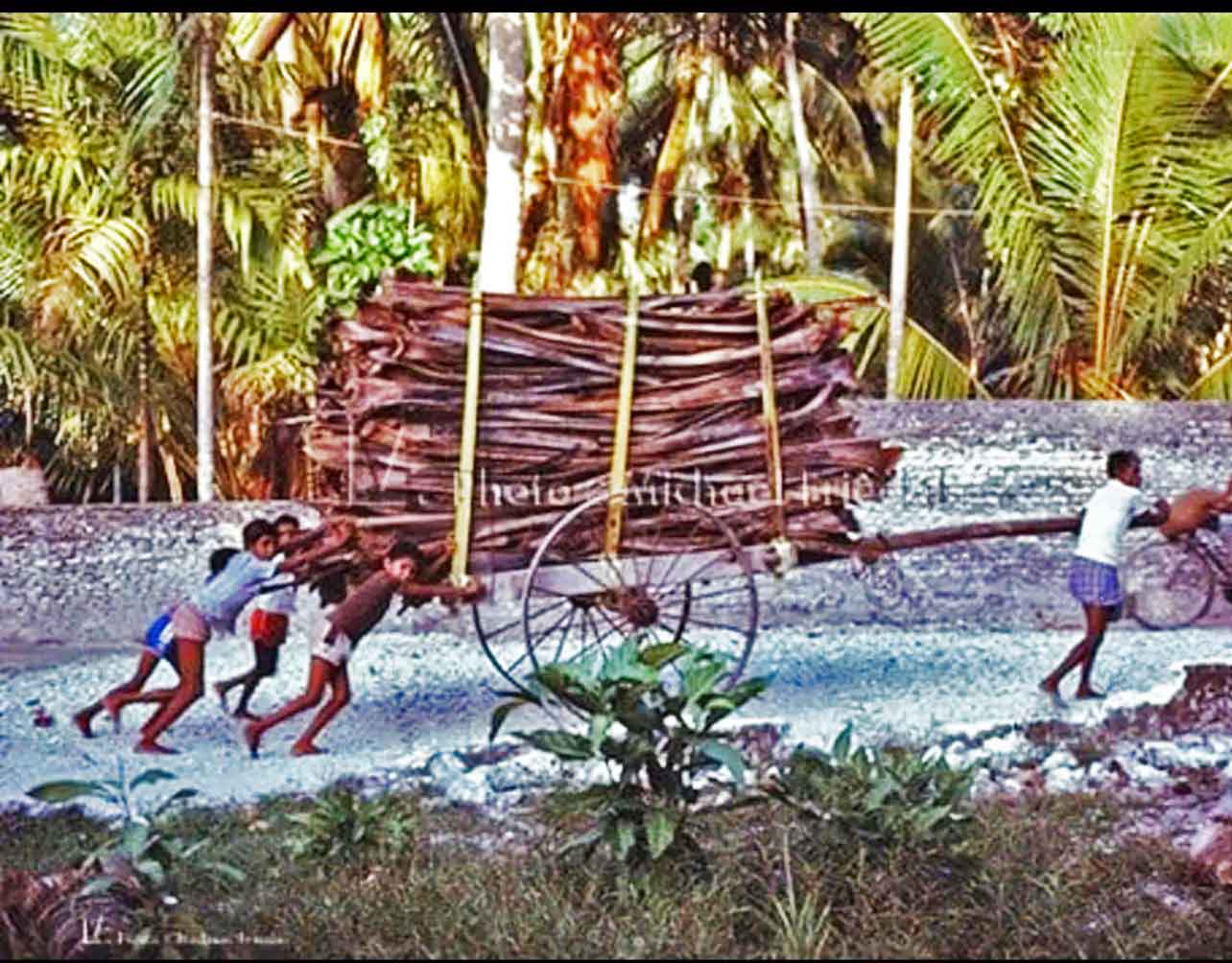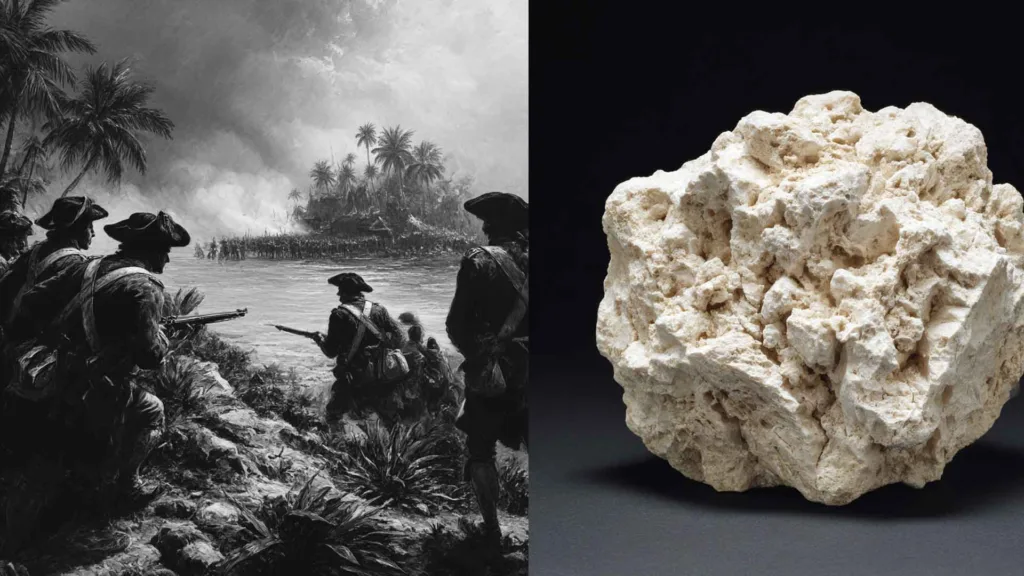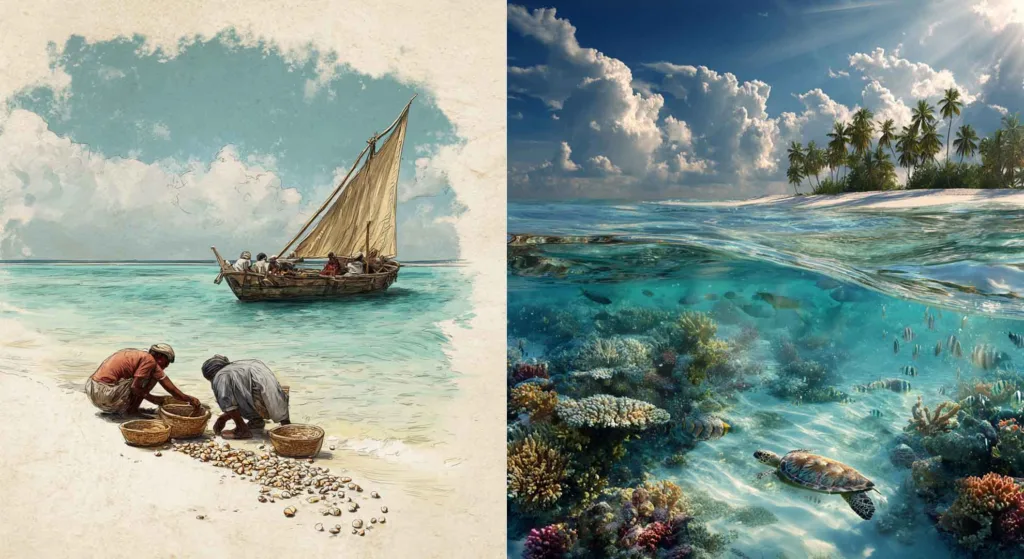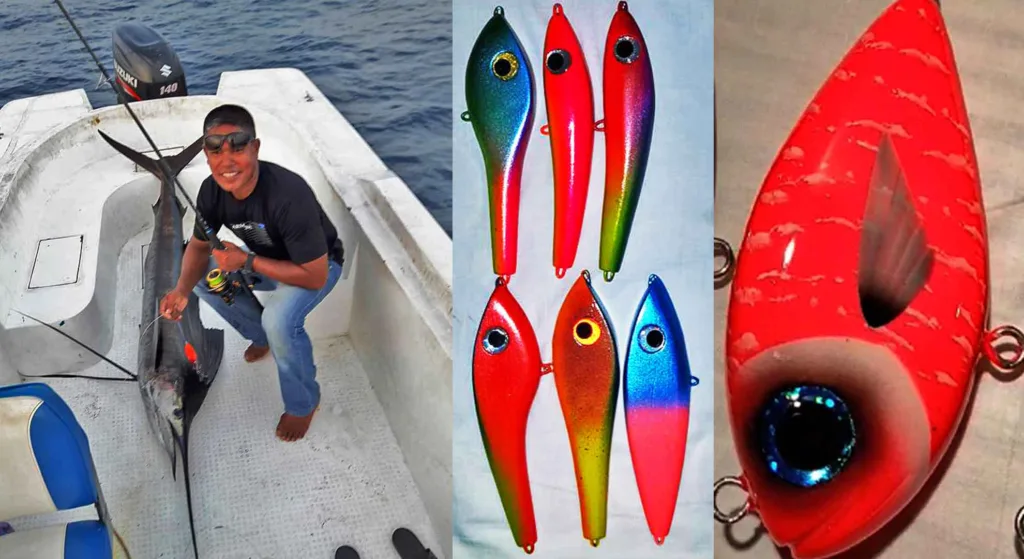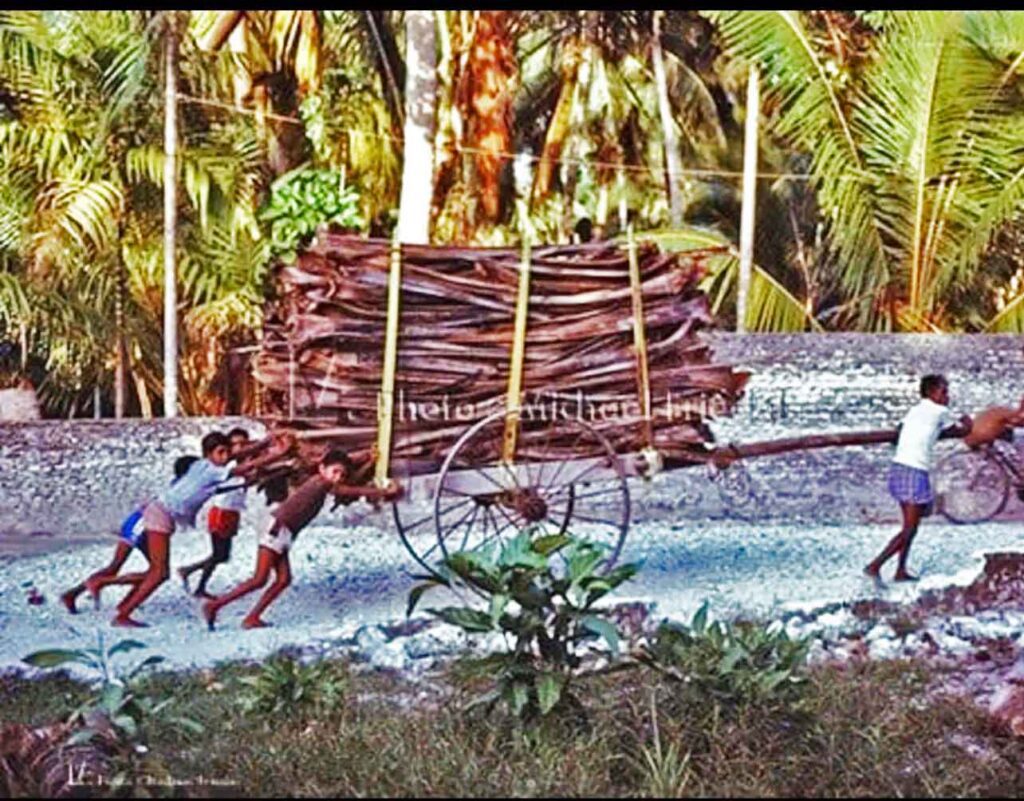
Human inventions and endeavours to succeed in life are both vast and fascinating. Their struggle and ingenuity in life are incredible.
Animals like cows, camels, and oxen are not terrestrial animals in the Maldives; instead, carts of various designs and sizes were used.
This small chronicle describes how people on our island used to transport timber, wood, and other materials in the early days. During the mid-1980s, I recall witnessing the movement of a large waggon on our island’s sandy roads.
This carriage, or waggon, is known as a gaadiyaa. The waggon had two large iron wheels. The cart’s diameter was about three feet.
There was a wooden structure fixed between the two wheels. This structure measured about six feet long and four feet wide. The structure aligned itself with the centres of the wheels.
This human-powered transport waggon was typically propelled by three to five people, depending on the weight and capacity of the load carried.
A person would hold a long wooden bar, similar to a tiller, which was connected to the front of the waggon. This person was in charge of steering the carriage. This wooden bar was approximately five feet in length.
As this person held the tiller, those behind the waggon pushed it as hard as they could. Normally, people used this waggon to transport large quantities of coconut tree leaves, timber, coconut tree trunks, and tree branches.
They pushed the waggon through the island’s narrow roads. Pushing the carrier through our island’s steep roads and terrain was difficult at times. Despite the difficulties and dangers, they were able to push through all of the rough terrain.
